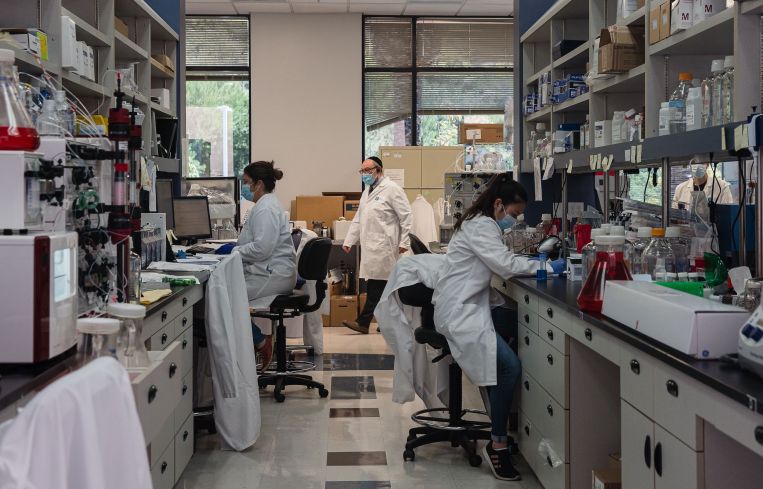Life Sciences Sales Crater, but Demand Expected to Rebound: Report
Yardi Matrix is bullish on the CHIPS Act and Ozempic returning the languishing sector to health
By Brian Pascus August 17, 2023 2:44 pm
reprints
Even as a supply glut faces the ailing life sciences industry, economists believe the sector is poised for growth, with properties trading at nearly four times the national square foot average of all office buildings and more than 23 million square feet of lab space currently under construction.
A new report from commercial real estate data and analytics firm Yardi Matrix concluded that while a supply glut for the life sciences sector is imminent, bullish demand stemming from an increasingly innovative economy bodes well for its fundamentals.
“It’s got something that office doesn’t have: It’s got a tail to it,” said Doug Ressler, manager of business intelligence at Yardi and author of the national report. “It’s got demand to it — that ability to generate demand compared to office, which is in a whole deceleration mode.”
Ressler noted this strong demand for life sciences is being driven by the 21st century economy.
“It’s got a lot of runway to explore, especially with the biopharma industry, the CHIPS Act,” he said, referring to the 2022 federal legislation that provides a $53 billion investment in U.S. semiconductor manufacturing, research and development.
“Life sciences is more self-sustaining, self-reliant [than other asset classes], and you have an increasing number of student visas being granted in California and the East Coast for biopharma activity to support life sciences,” he added.
The astronomical growth of life sciences in commercial real estate has undoubtedly been one of the biggest — and most optimistic — stories of recent years.
Last decade, life sciences comprised only 5 percent of all office construction, and only 23.9 million square feet of life sciences facilities were delivered between 2010 and 2019. But the sector has accounted for 25 percent of all new construction starts in the last two years, and more than 16.3 million square feet of new life sciences facilities have been delivered since 2021 alone, according to Yardi Matrix.
All that considered, there are some cracks in the life sciences sector’s armor. Not only has a slowdown in venture capital funding occurred in 2023 (largely due to increased capital costs), but sales have also cratered: Only $386.6 million in sales for lab space has been generated through July 2023, compared to $6 billion in lab space sales in all of 2022.
Cities like Phoenix and Atlanta have seen the largest pullback of life sciences development, while hubs like Boston and San Diego are still going strong, albeit at a more measured pace, according to Ressler.
“We think that’s attributable to the fact that interest rates and cost of development, ability to develop, zoning, permitting, you name it, has made all the markets, but especially the life sciences markets, pull back,” he said.
Yardi Matrix now forecasts the lack of demand to cause a life sciences supply glut in the coming quarters.
“We believe the pandemic initiated a lot of life sciences activity, and, obviously, with the severity of the pandemic lessened, the need for the life sciences development falls to the cost and demand side of things,” said Ressler. “Some of that is also being eaten up by technology hubs in major universities, who no longer need to have third party independent life sciences development.”
But if demand in the sector is expected to decline in the coming months, it will be buttressed back to an eventual state of health by high prices and innovation within the biopharmacy field.
National life sciences properties sold in 2023 have traded at an average of $770 per square foot, which is nearly four times the $190 per square foot that national office properties have traded at this year, according to Yardi Matrix.
Ressler noted that new drugs like Ozempic, the weight loss treatment, and generative artificial intelligence are likely to play a role in nursing the sector back to health.
“It will go through a little dip, but we see the life sciences augmented by the new technology that’s been created by the biopharma industry,” he said.
Brian Pascus can be reached at bpascus@commercialobserver.com.


